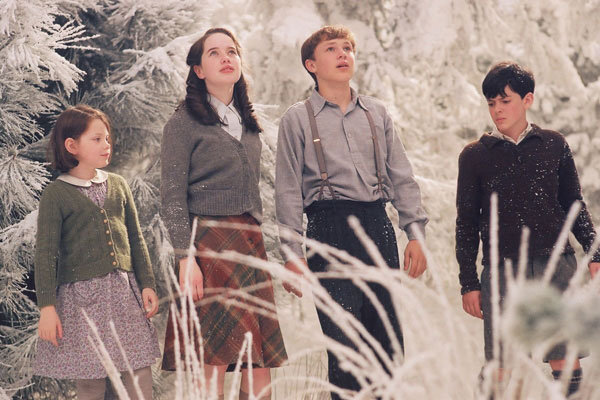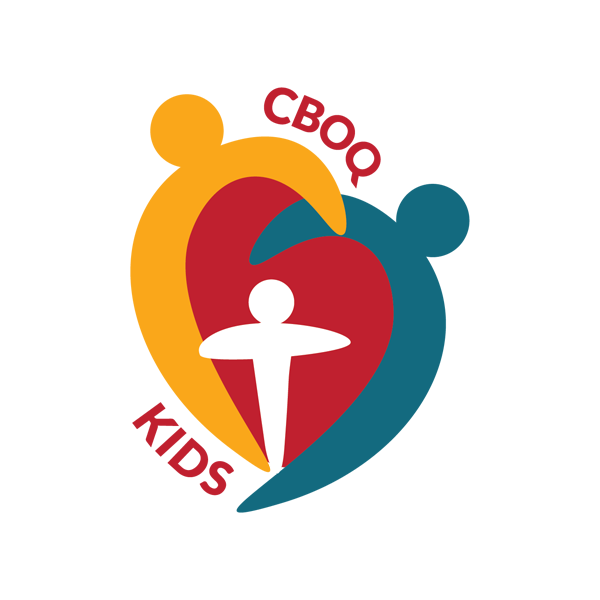
The Lion the Witch and the Wardrobe: Book Review
Here’s the first thing I want you to know about the Lion the Witch and the Wardrobe: it is going to change your life. It will change and enhance your imagination, it will thrill the part of you that seeks adventure and it will radically transform the way you comprehend your faith. From the first page to the last you will find yourself in a place of wonder, discovery, and enchantment and you will love every sentence on every page. That was my experience with this novel and while some may say it’s just a book, it’s a book that has made its way into my heart and soul.
The novel takes place in the year 1940 in the middle of WWII. Four children, all siblings are evacuated from London and taken to the countryside to live with a professor and his housekeeper. These four children, Peter, Susan, Edmund and Lucy, are the main characters of the novel and upon their arrival in the countryside decide to explore their new home. What I really love about this book is that the four main characters are some of the most dynamic and real characters I’ve encountered in literature. I love them because they embody childlike wonder, awe and excitement and yet simultaneously possess character traits we would associate with older, more mature characters like bravery, honesty and loyalty. As you and your children read this story together your children will be able to look at the main characters and be able to say “they are just like me” as well as “I want to be just like them”.
As the children set out to explore their new home the youngest, Lucy, finds her way into an old wardrobe in an abandoned spare room. She wanders to the back of the wardrobe, grazing the soft fur coats along the way until slowly the soft fur becomes hard and begins to scratch her face – in fact it no longer feels like fur at all. The further Lucy goes she begins to realize that the Wardrobe has transported her to a winter wonderland. As she makes her way further into the snowy winter wonderland and towards the stand alone Lamp post she meets Tumnus the faun who tells her that she is in a land called Narnia.
Narnia was created by the Great Lion Aslan and is a land filled with mythical creatures and talking animals. There are creatures with human torsos and goat legs known as Fauns and other rare creatures like Centaurs, Minotaurs, Dwarfs, Giants, Ghouls and Dryads. Narnia is also a place where time differs from that of our world and a trip to Narnia that lasts days will take mere minutes in our world.
After asking Lucy who she is and figuring out how she arrived in Narnia, Tumnus invites her to his home for a cup of tea. It is over tea Lucy discovers that there is a woman currently ruling Narnia known as the White Witch, who uses magic to keep it frozen and in a perpetual winter (but with no Christmas). Tumnus lets Lucy know that the White Witch has ordered any Narnian to hand over any humans they come across, or, as they refer to them in Narnia as, any “Sons of Adam and Daughters of Eve”. Tumnus, who was originally going to hand Lucy over to the White Witch, feels remorse after seeing how sweet the young girl is and lets Lucy return through the wardrobe back to the Professor’s home.
When Lucy returns from Narnia she tells her siblings about her adventure but they believe her story to be far-fetched. To appease her they check the back of the wardrobe. They open the Wardrobe, climb inside and search the back wall finding nothing but fur coats and a solid wood backing. Days later during a game of hide and seek Lucy and Edmund go through the Wardrobe and into Narnia but Edmund does not let Lucy know that he is following her and remains at a distance. Upon their arrival Lucy runs off to visit Tumnus the Faun and Edmund encounters the White Witch on a snow covered path who invites him into her sled, offers him magical Turkish delight and eagerly urges him to bring his siblings to her castle. Lucy and Edmund see each other as they leave through the wardrobe and Lucy is so excited to have someone else share in the adventure with her as well as have someone to credit her trip to this land beyond the Wardrobe. But when the two children return home and Lucy tells Susan and Peter about Edmund’s trip to Narnia Edmund denies going and claims he was simply playing pretend with Lucy.
Not long after Edmund’s denial all four children make their way to Narnia and Lucy takes her siblings to Tumnus’ cave. When they arrive they find his home ransacked with a note from the White Witch announcing Tumnus’ arrest for harbouring a human. As they leave a talking beaver intercepts them and tells them about the well-known prophecy in Narnia which states that when two Sons of Adam and two Daughters of Eve fill the four thrones at Cair Paravel the White Witch’s power will fall. It is here, from the mouth of a talking beaver, that they first hear of Aslan – the great lion, rightful ruler and King of Narnia who has been gone for many years but who is apparently on the move again. The four children then embark on a journey to meet Aslan and figure out how to defeat the White Witch and save Narnia.
“The Lion the Witch and the Wardrobe” is a novel that as parents and leaders we may look at and assume contains content beyond what we want our children to know. For Example:
- Tumnus the Faun almost hands Lucy over to the White Witch
- Edmund lies to his siblings about going to Narnia (he exhibits behaviour that is mean-spirited, selfish and unkind)
- Edmund lets his greed and desire for Turkish delight come before his commitment to his family
- Edmund keeps secrets from his family
- Peter and Susan don’t believe Lucy has been to Narnia even though she has always been honest with them
- Peter slays a wolf in order to save his sister Susan
- *SPOILER*- if you’ve read the book you know that towards the end of the novel the White Witch demands blood for Edmunds treachery. Instead of letting Edmund receive his punishment Aslan offers to take Edmunds place and offers up his life to save Edmunds. What you do need to know is that this novel contains the death of one of the main characters at the hands of the White Witch
- The final battle at the end of the novel that results in blood being shed by both parties
Here is why despite the harder parts of the novel I believe you should still read it with your kids:
- Tumnus has compassion on Lucy and is full of remorse. He models well what it looks like to stop, think and make the right choice.
- Edmunds lying reminds us all of our innate brokenness and need for a saviour
- Edmunds decision to lie also opens up the opportunity while reading for you to have a conversation with your child about how we all make mistakes but how we need to learn from those mistakes and work hard to make the better choice
- Peter is quick to apologize and say sorry to Lucy for not believing her
- The children recognize they have a responsibility to Tumnus for his compassion towards Lucy, since he saved Lucy from the hands of the White Witch they must show him the same respect and rescue him
- When Edmund keeps secrets from his family it puts him in grave danger – secret keeping in Narnia demonstrates that when we keep secrets from the people we love we may end up hurting them and ourselves
- Like the name of Jesus, the name of Aslan produces a supernatural feeling within the children upon hearing it. Aslan draws parallels to Jesus by being a character that brings new life, cannot be controlled or manipulated, is meant to be both loved and feared, and who has power over the darkness. We are reminded frequently throughout the novel that like God, Aslan cannot be controlled, manipulated or commanded – that he works in his own ways in his own time but that Aslan, like God, is innately good, merciful and gracious.
- Peter slaying the wolf and running to Susan’s rescue reveals the deep value we must have for family. Peter was willing to do anything he could to protect his sister and through this we can encourage kids to find ways to care for their family and friends. It won’t look as extreme as slaying an evil wolf but it provides an opportunity for children to think about how they can stand up for, protect and care for the people they love.
- Aslan also could have been the one to save Susan but he wanted to provide Peter with an opportunity to begin to develop his bravery, confidence and courage. In the same way God calls us into situations and circumstances that develop in us gifts and talents he has placed within us.
- C.S. Lewis always claimed that Aslan was not simply an allegory for Christ but rather a supposal about what form Christ would come in if another world like Narnia existed and needed saving just as ours did
- At the end of the novel Lucy asks Susan “Does he [Edmund] know what Aslan did for him?” – Do you know what Jesus did for you? Do your kids know what Jesus did for them?
As Christ Followers we are aware of the constant tension between good and evil. We recognize that as a result of Adam and Eve’s actions in the garden we as humans are born into a world of brokenness and that Jesus Christ took on flesh and suffered death on a cross to achieve redemption for us all. We need to think of Narnia like the world before Jesus’ death on the cross. Narnia is a world of supposal – a supposed other world that mirrors our earthy one to the extent that both are broken and in need of a saviour. Just like Jesus took our place and gave up his life to be crucified on a cross, in Narnia, Aslan sacrifices his life to save Edmund and the rest of the Narnian inhabitants from death and destruction. This Narnian world points us back to the greatest sacrifice we will ever know – a sacrifice that saved us and through grace gave us redemption and eternity. “The Lion the Witch and the Wardrobe” is a novel that will undoubtedly provide you and your family with the opportunity to start really important spiritual conversations with your children that will result in greater understanding and spiritual growth.

+ There are no comments
Add yours